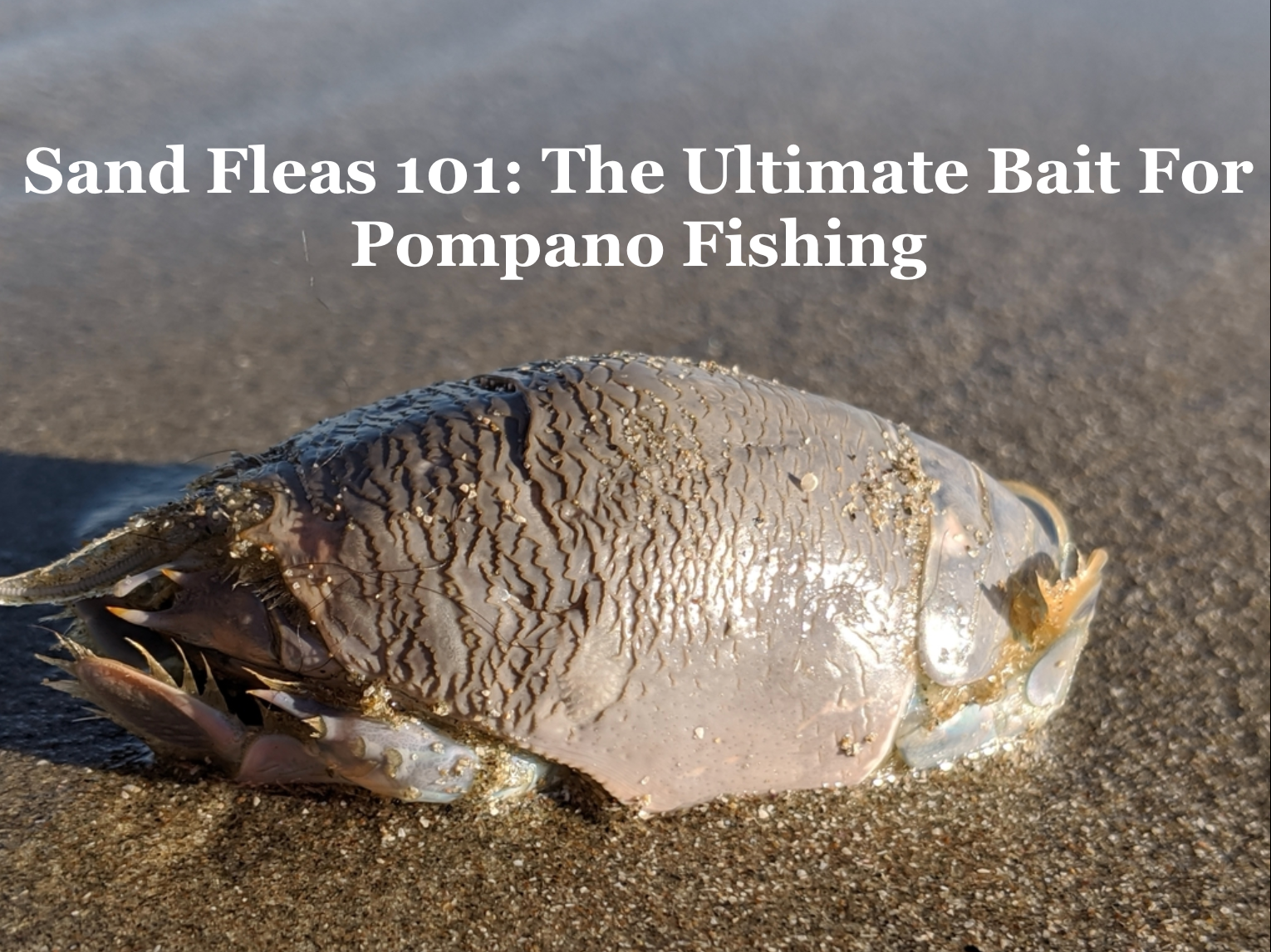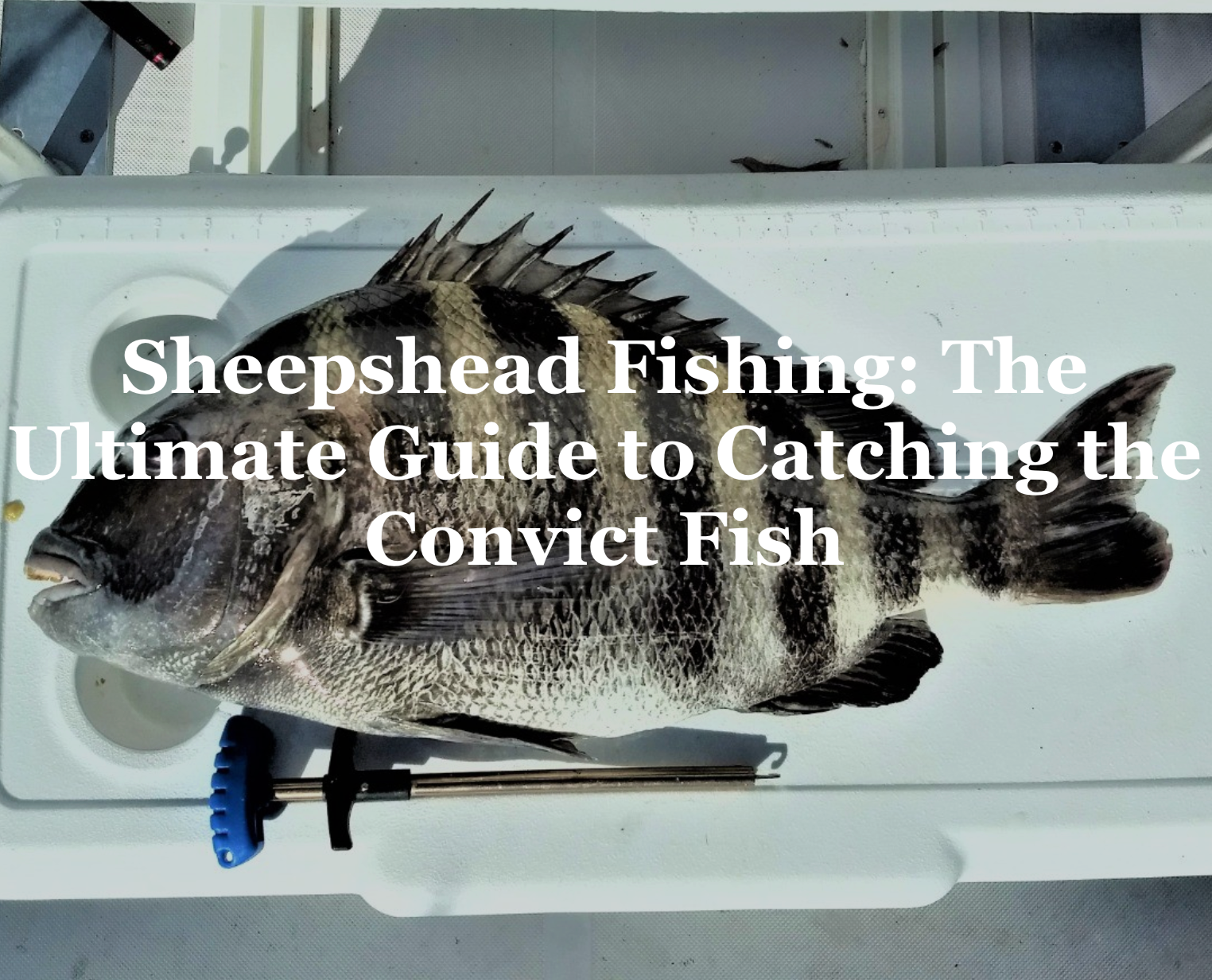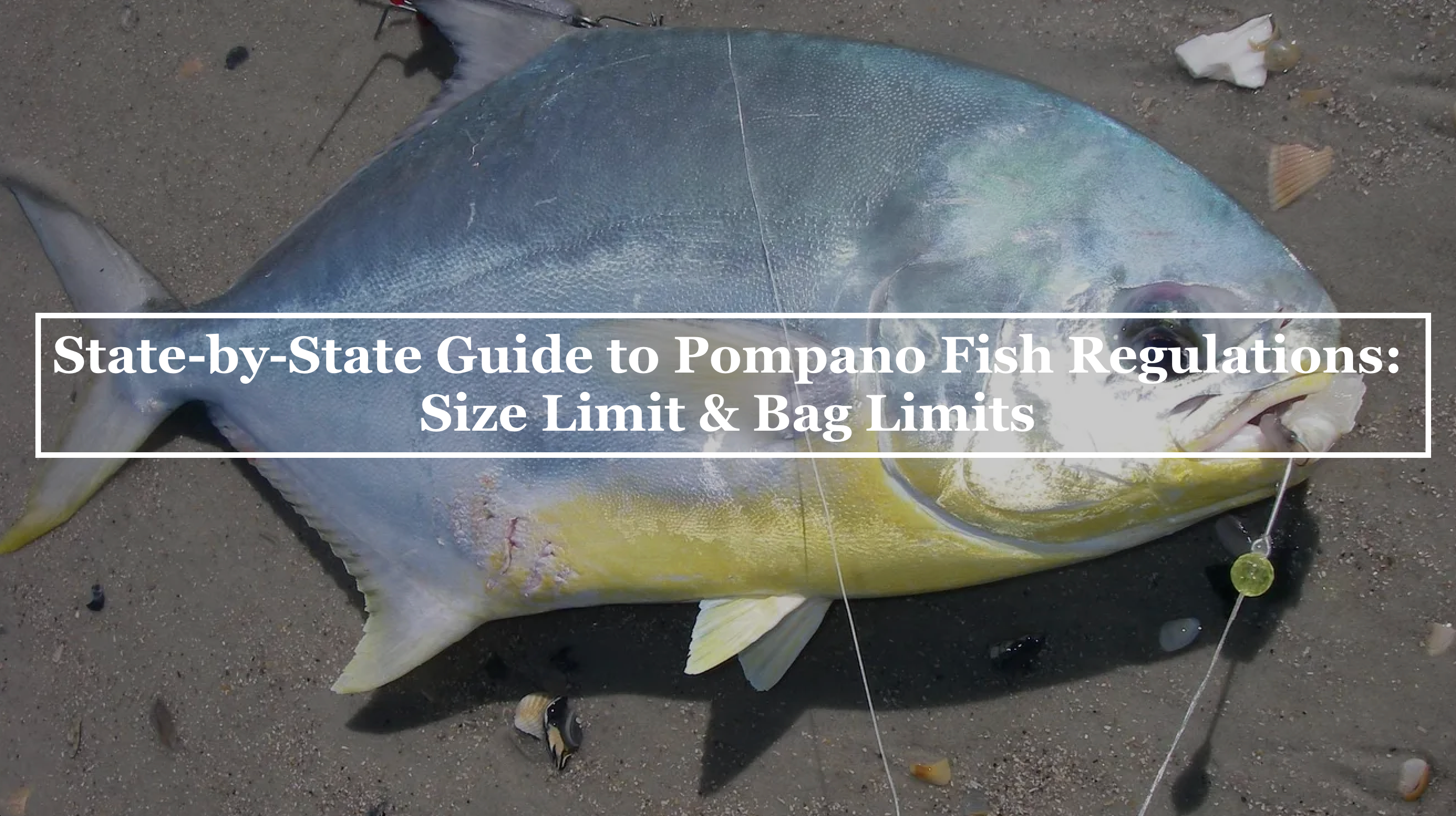Surf Fishing for Pompano With Sand Fleas
When it comes to targeting pompano fish, one of the most effective baits to have in your arsenal is sandfleas. In this blog post, we will explore the ins and outs of using sandfleas for pompano fishing, including where to find them, how to prepare them as bait, and techniques to maximize your chances of a successful catch.
What are sandfleas?

When it comes to fishing, seasoned anglers understand the importance of using the right bait to attract their target catch. One such bait that often goes overlooked but plays a significant role in the fishing world is the sandflea. Also known as mole crabs or sand crabs, these small crustaceans are found along sandy beaches and are a favorite delicacy for many fish species. Anglers who take the time to collect and use sandfleas as bait are often rewarded with successful fishing outings.
Sandfleas are a favorite among anglers for several reasons. Not only are they easy to collect from the sandy shores where they dwell, but they also release a natural scent that many fish find irresistible. When properly rigged onto a hook, sandfleas mimic the movements of natural prey and are effective in attracting a wide variety of fish species, including pompano, redfish, and sheepshead. As a low-cost and readily available bait option, sandfleas are a valuable asset in any angler's tackle box and can make a significant difference in their fishing success.
When are sand fleas in season?

Sand fleas have a seasonality that varies depending on location and environmental conditions. In general, sand fleas are most abundant and active during the warmer months, typically from late spring to early fall. During this time, the water and air temperatures are warmer, creating optimal conditions for sand fleas to thrive along sandy beaches. Anglers can typically find sand fleas in season when the water is above a certain temperature threshold, usually around 60 to 70 degrees Fahrenheit, which signals their increased activity and presence along the shoreline.
Locating Sand Fleas
Finding a good source of sand fleas is essential for pompano fishing. These tiny crustaceans bury themselves deep into the sandy beaches along coastal areas. Look for areas with soft, sandy bottoms where sand fleas thrive. Low tide is often the best time to locate them, as the receding water exposes the beach and reveals their presence.
To collect sand fleas, use a sand flea rake or a specialized sand flea scoop. Gently comb through the sand, targeting the wetter areas close to the shoreline where they are most abundant. It is important to handle them carefully to avoid damaging their delicate bodies.
How to catch sand fleas

Catching sand fleas is a skill that can greatly enhance an angler's fishing success while surf fishing. Why not fish with what the naitive fish are eating on a daily basis. To catch these elusive crustaceans, begin by heading to the shoreline during low tide when the sand fleas are closest to the surface. Look for areas with wet sand and gentle waves, as this is where sand fleas tend to congregate. Armed with a sand flea rake or a flat shovel, start digging into the sand in a circular motion, being careful not to dig too deep and disturb the sand fleas. As you dig, keep an eye out for tiny air bubbles or the subtle movements of sand fleas just beneath the surface – these are telltale signs of their presence.
Once you have located a sand flea, gently scoop it up using your rake or shovel and place it in a bucket filled with damp sand. Be patient and methodical in your approach, as catching sand fleas can require a bit of practice and finesse. Remember to handle the sand fleas with care to avoid injuring them, as healthy and lively sand fleas make for the most effective bait.
How to make a sand flea rake

Building your own sand flea rake is not only a cost-effective solution but also a great way to customize your fishing gear for catching these elusive crustaceans. To get started, gather the necessary materials: a sturdy metal garden rake, a hacksaw, a roll of wire mesh, zip ties, and a pair of gloves for protection. Begin by removing the handle from the garden rake using the hacksaw. This will allow you to work with just the rake head, which is essential for efficient sand flea collection.
Next, take the wire mesh and cut a piece that is slightly bigger than the rake head. Carefully shape the mesh to match the curvature of the rake head and securely attach it using zip ties or wire. Ensure that the mesh is tightly secured to prevent any sand fleas from escaping. Once the mesh is securely attached, be sure to trim off any excess wire to avoid any sharp edges that may harm the sand fleas or the angler.
How to keep sand fleas alive
To ensure optimal fishing success, it is crucial for anglers to keep their sandfleas alive and in prime condition. One of the best techniques for preserving sandfleas is to store them in a well-ventilated container filled with damp sand. The sand provides the necessary moisture to keep the sandfleas hydrated and prevents them from drying out. Additionally, keeping the container in a cool and shaded area helps maintain the sandfleas' body temperature and prevents unnecessary stress that can lead to their demise.
Another effective technique for keeping sandfleas alive is to rinse them with fresh saltwater periodically. This practice helps remove any debris or toxins that may have accumulated on their bodies while also providing them with the essential minerals they need to thrive. Anglers should avoid using freshwater, as it can shock the sandfleas and cause harm. By following these techniques and regularly inspecting the sandfleas for any signs of distress, anglers can ensure that their bait remains lively and attractive to the fish, ultimately leading to a successful fishing expedition.
Preparing Sand Fleas as Bait

Once you have gathered a sufficient amount of sand fleas, it's time to prepare them as bait for pompano fishing. Start by removing any excess sand by rinsing them gently in a bucket of saltwater. This will make them more appealing to pompano and help maintain their natural scent.
Hooking sand fleas can be done in different ways depending on your preference and fishing technique. One common method is to thread the hook carefully through the lower part of the crab's body. Another option is to impale the sand flea with the hook, aiming to keep it secure but still allow for natural movement in the water. Experiment with different hook sizes to find what works best in your fishing area.
How to preserve sand fleas
A great technique for preserving sand fleas is to freeze them. Before freezing, ensure the sand fleas are clean and free of any sand or debris. Place the sand fleas into a resealable freezer bag, press out any excess air, and seal the bag tightly. Label the bag with the date and store it in the freezer. When ready to use the sand fleas for fishing, simply defrost them in a refrigerator and allow them to reach room temperature before putting them to use. By following these preservation method, anglers can extend the lifespan of their sand fleas and have a ready supply of bait for future fishing trips.
How to fish sand fleas

Now that you have your sand fleas ready as bait, it's time to put them to use and increase your chances of success when targeting pompano.
Pompano Rig
A pompano rig is a popular saltwater bottom fishing rig used when surf fishing for pompano. It is designed to target pompano fish and consists of a heavy sinker attached to the end of the fishing line to keep the rig anchored to the bottom. Above the sinker, there are typically 2 or 3 hooks tied onto the line, often rigged with colorful floats and plastic beads to attract the fish. The multiple hooks increase the chances of hooking multiple pompano fish at once, making it an efficient setup for targeting these schooling fish.
Pompano Jigs
Another effective technique is jigging for pompano. It is best to use pompano jigs tipped with sand fleas to help ensure a bite. These jigs mimic the swimming action of sand fleas and can be worked along the sandy bottom or near structure where pompano are likely to be present. Vary the retrieve speed and experiment with different colors to find what works best in your fishing spot.
Where to Pompano Fish With Mole Crabs

For optimal results, it is advisable to target areas that have a greater depth compared to the surrounding water. Look for deeper holes or cuts through the sandbar as these can attract pompano and other game fish, particularly if there is a rip current present. Rip currents create an ideal environment for pompano and other fish, as they gather and feed on the bait being swept offshore.
As the water temperatures rise during the later summer months, it may be necessary to cast further from the shore to find pompano in deeper waters. A long surf rod can be advantageous in this situation, allowing you to explore deeper holes and troughs further away from the beach.
A useful tactic for identifying productive fishing spots involves visiting the beach during low tide and scouting out areas with a darker appearance, indicating greater depth. Once these areas are identified, return during a higher tide and focus your fishing efforts in those locations.
Using sand fleas as bait can greatly increase your chances of hooking pompano and enjoying a successful day on the water. Remember to handle sand fleas delicately and collect them during low tide. Prepare the sand fleas by rinsing off the excess sand and hook them carefully. Experiment with different fishing techniques such as pompano rigs, pompano jigs, and surf fishing to find what works best in your fishing location. By mastering the art of sand flea fishing, you'll be well on your way to reeling in these prized and delicious fish.






Share:
Guide For Mastering the Art of Baiting a Pompano Hook with Squid
How to use cut bait: Strategies, Techniques and Advantages